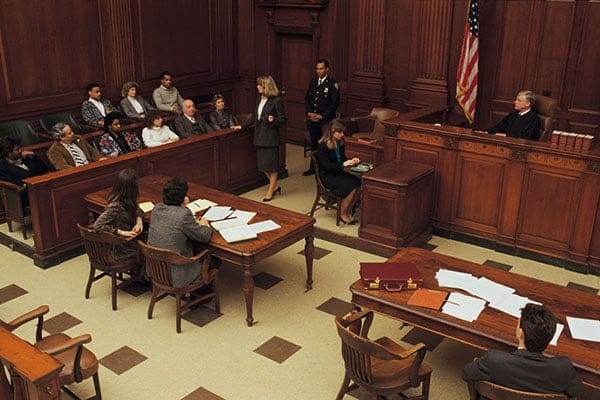Durham court reporting best practices for maintaining confidentiality
Comprehending Court Reporting: An Introduction of Its Duty in the Lawful Process
Court reporting is a vital part of the lawful system. It guarantees that every spoken word throughout depositions and trials is accurately recorded. This transcription gives a dependable record for future recommendation. Court reporters possess specialized skills and should navigate different innovations. durham court reporting. As the lawful landscape progresses, so as well does the role of these specialists. Recognizing their effect increases important inquiries regarding the future of lawful documents and responsibility
The Importance of Accurate Transcription in Lawful Procedures

Accurate transcription plays a vital role in lawful procedures, functioning as the foundation for justice and liability. Stenotype reporter, tasked with catching talked discussion during trials and depositions, guarantee that every word is documented with precision. This transcription comes to be a critical record, permitting lawyers, courts, and judges to evaluate the process properly. Mistakes or omissions in transcription can result in misunderstandings, false impressions, and possibly unjustified end results.
Additionally, these records work as official documents that can be referenced in future lawsuits, allures, or scholarly analyses. The honesty of the judicial procedure depends greatly on the reliability of these records. The capability to present a clear, verbatim account of disagreements and statements is crucial in promoting the rule of regulation. Subsequently, the significance of accurate transcription can not be overemphasized; it is essential for assuring reasonable trials and preserving public count on the legal system.
The Abilities and Credentials of Court Reporters
While the duty of a stenotype reporter is crucial in the legal system, it calls for a special set of credentials and skills to ensure reliable performance. Proficiency in shorthand or voice writing is essential, making it possible for reporters to catch talked language precisely and efficiently. In addition, a strong grip of lawful terminology and procedures is essential, as stenotype reporter must understand complex conversations that take place during trials and hearings.
Furthermore, focus to information and remarkable paying attention skills are essential to guarantee precise transcripts. Lots of court reporters have qualification from accredited programs, which usually consist of rigorous training in transcription methods and legal values. Strong social skills also play a significant role, as press reporters often interact with judges, witnesses, and lawyers. Ultimately, the mix of technical effectiveness, legal knowledge, and social capabilities gears up stenotype reporter to meet their responsibilities properly within the judicial system
Different Kinds Of Court Reporting Services
Court reporting services incorporate a range of customized functions tailored to satisfy the requirements of the legal system. One noticeable kind is deposition reporting, where stenotype reporter record witness testaments beyond court setups, usually for use in trials. Another service is real-time reporting, which offers immediate transcription throughout proceedings, allowing lawyers to access real-time message feeds. Additionally, some stenotype reporter offer transcription of audio and video clip recordings, making sure exact paperwork of events.
Shut captioning solutions are likewise given, decriminalizing proceedings obtainable to people with hearing problems. Lots of court reporting firms specialize in serving particular lawful fields, such as household law, criminal regulation, or business legislation, thereby using customized know-how. Finally, some reporters may supply video clip deposition solutions, which boost the documents process through aesthetic context. Each kind of service plays a crucial role in guaranteeing the precision and stability of lawful documents.
The Technology Behind Modern Court Reporting
Modern court reporting counts heavily on sophisticated innovation to boost precision and performance. Stenography devices, electronic recording strategies, and real-time transcription software application are integral components of this area. These tools not only facilitate the transcription process but also ensure that legal procedures are recorded with precision.
Stenography Machines Explained
Stenography makers act as the foundation of modern court reporting, transforming talked words into written message with amazing effectiveness. These specialized tools utilize an one-of-a-kind key-board layout that permits stenotype reporter to type syllables and words phonetically, allowing them to capture dialogue at high rates. Using shorthand icons means that reporters can record conversations in actual time, making sure accurate records of lawful process. Stenography equipments are equipped with advanced technology, including software application that can translate stenographic notes right into readable message. This combination of equipment and software greatly boosts the rate and precision of court reporting, making it an important device in the lawful useful site area. As a result, stenography remains a vital skill for experts in the court.
Digital Recording Techniques
Developments in innovation have actually increased the devices available for court reporting past conventional stenography machines. Digital taping strategies have actually emerged as a trusted alternative, capturing sound and video clip of lawful proceedings with high integrity. These systems use microphones and tape-recording devices strategically positioned to guarantee clarity and decrease background sound, supplying an extensive record of discussions and testimonies. The videotaped web content can be played back for precision throughout transcription, permitting stenotype reporter to confirm information efficiently. In addition, digital recordings can be stored securely for future referral, improving ease of access and maintaining the honesty of the lawful process. As courts welcome these modern-day innovations, electronic recording techniques play a significantly crucial function in maintaining accurate and reliable documents.
Real-Time Transcription Software
As courts significantly embrace technology to boost the lawful procedure, real-time transcription software application has actually become a vital tool for stenotype reporter. This ingenious modern technology permits court reporters to record talked dialogue promptly, giving prompt access to exact documents throughout procedures. By converting talked words into text as they are spoken, real-time transcription software program assists in effective communication in between attorneys, judges, and other court individuals. The software program frequently incorporates with courtroom stereo, making sure that every word is recorded with precision. In addition, it can produce records for evaluation and circulation, simplifying the paperwork procedure. Consequently, real-time transcription software not only check my blog enhances the performance of court reporting but additionally enhances the overall accessibility of lawful procedures.
The Duty of Court Reporters in Maintaining Court Room Integrity

Court press reporters contribute to the openness of the judicial process. By delivering thorough transcripts, they enable the public and media to gain access to court procedures, fostering accountability. Their visibility in the court additionally assists preserve decorum, as their actions emphasize the severity of the legal procedure.
Along with technical skills, court press reporters have to show professionalism and impartiality, vital for protecting the honesty of the judicial system. Inevitably, their attentive initiatives support reasonable trial rights and strengthen public confidence in the lawful structure.
The Future of Court Reporting in an Evolving Legal Landscape
As the lawful landscape progresses, court reporting faces considerable changes driven by technical developments and an expanding shift towards remote solutions. These growths are reshaping how court press reporters run, influencing both the this link rate and accuracy of legal paperwork. The future of this occupation will likely rest on its adaptability to these arising fads.
Technical Innovations Impacting Reporting
Many technical innovations are reshaping the landscape of court reporting, introducing a new period of effectiveness and accuracy. Digital recording systems have actually come to be commonplace, allowing for precise audio capture during proceedings. These systems often incorporate with transcription software program, assisting in faster turnaround times for transcripts. Furthermore, fabricated knowledge is playing a considerable role in simplifying the transcription process, with speech acknowledgment modern technology aiding reporters in generating a lot more precise paperwork. Cloud-based storage services enhance accessibility, making it possible for legal experts to obtain and share transcripts quickly. As these developments proceed to advance, they assure to additional change the court reporting occupation, improving the overall legal process while maintaining high criteria of professionalism and reliability and honesty.
Change In The Direction Of Remote Providers
The lawful landscape is significantly embracing remote services, reshaping how court reporting is conducted. This shift has actually been sped up by technical developments and the need for versatility during current global events. Court reporters now make use of video conferencing platforms to help with depositions and hearings, permitting better availability and performance. Remote solutions make it possible for engagement from different areas, minimizing travel expenses and logistical difficulties. Additionally, electronic transcription tools enhance precision and simplify the documentation process. As the lawful market adapts, stenotype reporter are needed to establish new abilities and familiarize themselves with emerging modern technologies. This evolution presents both possibilities and difficulties, pushing the profession in the direction of a more integrated, technology-driven future while keeping its core dedication to supplying reliable and specific lawful documents.

Often Asked Concerns
Just How Much Do Court Reporters Generally Earn Yearly?
Stenotype reporter normally earn between $50,000 and $100,000 each year, relying on experience, area, and the need for services. Specialized abilities or certifications can even more boost their gaining possibility in different legal setups.
What Is the Average Duration of Court Reporting Training Programs?
Court reporting training programs typically last in between 18 months to 2 years. This duration differs based on the institution and the particular curriculum, incorporating both concept and useful abilities crucial for aspiring court reporters.
Can Court Reporters Work Remotely for Lawful Process?
Yes, court reporters can function remotely for lawful process, using technology to transcribe sound and video feeds. This adaptability permits them to give exact paperwork while preserving the stability of the lawful process.
What Is the Difference Between a Stenotype Reporter and a Clerk?
A court reporter concentrates on transcribing lawful procedures, while a clerk focuses on shorthand writing for various contexts, consisting of meetings and meetings. Both roles entail catching talked words yet differ in their specific applications and settings.
Are Court Reporters Required to Have Licenses or accreditations?
Yes, stenotype reporter are normally called for to get licenses or qualifications. These qualifications ensure they possess the necessary skills and understanding to precisely record legal procedures, preserving the integrity of the judicial process.
Lots of court reporters possess qualification from certified programs, which often consist of rigorous training in transcription strategies and legal values. One prominent type is deposition reporting, where court reporters transcribe witness statements outside of court settings, typically for usage in trials. As court rooms progressively take on innovation to improve the lawful process, real-time transcription software program has actually ended up being a necessary tool for court press reporters. Yes, court reporters can work from another location for lawful procedures, utilizing technology to record audio and video feeds. A court reporter specializes in transcribing legal procedures, while a clerk focuses on shorthand writing for different contexts, including conferences and conferences.